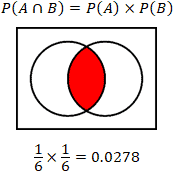6 1 Odds Calculator
Posted : admin On 4/15/2022- 6 To 1 Odds Payout Calculator
- 6 1 Odds Calculator Express Entry
- 6 1 Odds Calculator Bankrate
- 6 1 Odds Calculator Formula
When a coin is tossed, there lie two possible outcomes i.e head or tail. If two coins are flipped, it can be two heads, two tails, or a head and a tail. The number of possible outcomes gets greater with the increased number of coins. Most coins have probabilities that are nearly equal to 1/2. For instance, flipping an coin 6 times, there are 26, that is 64 coin toss possibility. Calculate the probability of flipping a coin toss sequence with this Coin Toss Probability Calculator.
When a coin is tossed, there lie two possible outcomes i.e head or tail. If two coins are flipped, it can be two heads, two tails, or a head and a tail. The number of possible outcomes gets greater with the increased number of coins. Most coins have probabilities that are nearly equal to 1/2. For instance, flipping an coin 6 times, there are 26, that is 64 coin toss possibility. Calculate the probability of flipping a coin toss sequence with this Coin Toss Probability Calculator.
This Coin toss probability calculator shows the probability of minimum and maximum possibilities of head and tail outcomes.
- For example, the odds of winning the US Powerball lottery jackpot are about 1 in 292 million (1/292,201,338) where 292,201,338 is total number of possible combinations. The order in most lottery draws does not matter. If we examine the poker example further: a poker hand can be described as a 5-combination of cards from a 52-card deck.
- When building a big pick-6 ticket, many handicappers like to create spread tickets to cover more horses and keep their costs down. This calculator will help you build cost effective pick-6 tickets. Ticket Type: 50¢ Pick 3 50¢ Pick 4 50¢ Pick 5 50¢ Pick 6.
6 To 1 Odds Payout Calculator
Related Calculators:

Top Calculators
Popular Calculators
Top Categories

6 1 Odds Calculator Express Entry
To calculate the odds of rolling two dice with a sum of four (for instance, a 1 and a 3), begin by calculating the total number of outcomes. Each individual dice has six outcomes. Take the number of outcomes for each die to the power of the number of dice: 6(number of sides on each die) 2(number of dice) = 36 possible outcomes.

Single Probability Calculator
Formulas:
- Probability of event A occurring P(A) = n(A) / n(S).
- Probability of event A not occurring P(A') = 1 - P(A).
Formulas:
- Probability of event A occurring P(A) = n(A) / n(S).
- Probability of event A not occurring P(A') = 1 - P(A).
- Probability of event B occurring P(B) = n(B) / n(S).
- Probability of event B not occurring P(B') = 1 - P(B).
- Probability of both events occurring P(A ∩ B) = P(A) x P(B).
- Probability of either events occurring P(A ∪ B) = P(A) + P(B) - P(A ∩ B).
- Conditional Probability P(A B) = P(A ∩ B) / P(B).
Example Multiple Probability Calculation
6 1 Odds Calculator Bankrate
Find multiple event probabilitiy, given n(s) = 50, n(A) = 10 and n(B) = 5
6 1 Odds Calculator Formula
- P(A) = 10/50 = 0.2
- P(A') = 1-0.2 = 0.8
- P(B) = 5/50 = 0.1
- P(B') = 1-0.1 = 0.9
- P(A ∩ B) = 0.2 *0.1 = 0.02
- P(A ∪ B) = ( 0.2 + 0.1 ) - 0.02 = 0.28
- P(A B) = 0.02 / 0.1 = 0.2